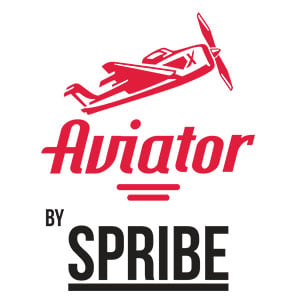Industry veteran Kevin Dale makes the case for how business models can be used to improve decision making.
You know the score; one tweak to something like your CPA or ARPU assumptions can show you conquering the world, or going broke – and it all seems so arbitrary. Worse still, you build a pretty model but when you go live,
your actuals look nothing like it. These are not reasons to discard modelling – quite the opposite, they’re reasons to get it right.
Business models can be a useful tool for evaluating strategies in both start-ups and mature companies. But how you build them or use them determines their success. They’re daunting for the beginner and difficult to master, but get them right and they really can predict the future. Here are 20 tips to help models work for you.
Models aren’t just for start-ups
The most common idea of a model is the one used by new start-ups. The main purpose of these is for founders to justify investment in their new B2B or B2C venture. A simple one with dummy data is shown in Image 1. Before you shout, “Ooh, those CPAs, budgets, margins or ARPUs etc. are too low or too high”, please don’t take this as a model model! It is simply included as a high-level sample to pick at as you see fit: we’ll get to assumptions a bit later. Even a basic model like this already spits out a few predictions: all other things being equal, for example, this business will plateau around year 6, i.e. you’ll need to have more up your sleeve.

Let’s park the start-up model for now, as there are plenty of other useful models out there.
Companies forecast their prospects of rolling out to a new country by basing their model on relatively firm data from their existing markets, but tweaking assumptions according to known differences in the new territory. Others might model at the level of individual product launches, such as a new slot game to existing users.

Many new slot games peak, in terms of users, after a few months. That is of course, unless you model game upgrades, reskins, gamification quests or reactivation promotions and so forth. As per the previous sample, this
is not intended to show how a typical game will/should perform. Your own assumptions will vary significantly from those used. This one simply says that, were these assumptions to be true (and were the conversion rate also to tail off by month six) , this game would contribute around £500,000 before fading into relative obscurity.
Marketing campaigns are routinely modelled from costs through to acquisition metrics - though not typically through to campaign ROI, based on lifetime values. Anyone who’s ever launched a hot sign-up offer with limited wagering requirements will have been through the rollercoaster of elation to despair. New customer numbers make you look like employee of month one, but the ARPU and retention stats that filter through in month two need some creative explanation. Free money has always attracted bonus abuse. Sometimes, the odd new VIP caught in the net will save you… but only sometimes.
In this context, one area models serve well is pricing. Whether you’re considering margin changes or bonusing options, models can help to establish the optimum levels for maximum returns.
Strategic, tactical, or both?
Want to know what your parameters are when negotiating a new partnership/supplier deal? Make sure you’ve modelled all possible commercial options before opening up the discussions. It’s probably worth modelling the potential value of these options from your partner’s perspective too.
There’s clearly a difference between decisions that move the EBITDA millions round the board to the nitty gritty of commission or retention rates, but often the first still requires the hard graft of the second. When it comes to implementing your big decisions, you certainly won’t regret having built a model that also defines your tactical objectives.
Model to sufficient detail for your purposes
Given the almost infinite number of business types and uses of models, it’s hardly surprising you can’t buy them off the shelf. They’re all quite different and it takes a fair bit of time to get them right. One question is: How detailed does your model need to be?
Quite simply, this will depend on three things: what you want it to do, how important is the decision and what time pressures or constraints you are under. On occasions, I’ve had to do a whole bundle of ‘fag-packet’ models which might use, say, rough [user x ARPU] or [% growth in conversion rates x existing revenues] metrics, i.e., where the output is not particularly robust. It can though be useful if a business is facing a really long list of opportunities they need to prioritise quickly. This initial triage can sort the milk from the cream. It also means you have more time to model properly those that seem to rise to the top.
At the other end of the scale are those models that require days or weeks of work to get right. You might construct multiple sheets of detailed assumptions, with cost breakdowns or customer metrics by source/by product. You might need to build up your model by customer segment or behaviour, such as whales vs sharks vs fish, or by channel/device too. Depending on a model’s purposes, you need to find your happy medium between imperfect action and perfect inaction.
Be realistic
So, you’ve developed your hockey stick model that predicts world disruption by year two, domination by year five and the spiel for your investors/client/boss is complete. If the purpose is to excite or persuade, an ambitious model isn’t wrong as such. Enthusiasm can go a long way to landing the deal or kicking off the venture - but if you want it to succeed, make sure you haven’t deluded yourself in the process.
This is possibly the most common of all model mistakes – and we’ve probably all been there. How to wake yourself up before sleepwalking off the cliff? One trick is to write down the risks and uncertainties in your model and note down some mitigating factors too. These don’t have to be in your sales pitch, but they might spare you some grief later. They can also help when fielding any criticism. Make sure you find out what the conservative and downright ugly scenarios might look like too, or try this one: If it were your money, would you invest in this venture/decision/campaign? Also, when you go live, make sure you have a contingency plan for those unsightly scenarios you buried somewhere.
Leave a bit in the tank
Better still, present a realistic scenario but have a few extras up your sleeve that are properly modelled out too. You might list more opportunities to roll out, extend or cross-sell to other products and markets later. Alternatively, show them why your assumption really is conservative when compared to hard fact elsewhere. Extra upside is a reasonable defence for a dodgy assumption, but nothing quite beats solid evidence.
Double check assumptions
As for the evidence itself, this might sound obvious, but not for nothing do they say that “assumption is the mother of all f*** ups.” Get just one of your five or six key assumptions badly wrong and the whole model, or your venture, might be toast.
This is the bit that requires hard graft, as you’ll need to do some research. Key assumptions might include: CPAs, CPIs, revenue shares, margin, ARPU, retention rates, customer numbers, bets/tickets/wagers per week/hour/month and more. You might be modelling app downloads, conversion metrics, CTRs, partner commissions or products used per customer.
When it comes to your fixed cost base, you’ll find they don’t tend to stay that fixed for too long. Try modelling your competitors’ fixed costs as a percentage of GGR over the years since inception, for example. Then be realistic about what sort of operational headcount you’ll need to manage your venture.
To check these assumptions, you might start with company stats, industry stats, gaming publications, magazines and competitor sites. By way of example, I’ve reconstructed a major operator’s business model (with a couple of tweaks) from annual reports below. Public companies are a great source, but they don’t hand you their model on a plate. You’ll need to put the hours in, if you want the data to help with your own assumptions.

But you’ll need to do more research than this. Trawl the forums, ring up your contacts who may have an opinion and importantly, don’t be satisfied with just one individual’s opinion on how big or small your assumption should be on the commission rate, ARPU numbers or whatever metrics you have. Their number might be a real number, but is often skewed by the product/market/proposition/time context it relates to.
If you have a bit of cash, get hold of a few grey hairs via the expert networks like GLG & Guidepoint, or bribe a handful of customers or ‘super-users’ for their opinion. Above all, get plenty of independent input to your assumptions.
They’re not just a finance thing
Product owners, account managers, ops directors, marketing execs and CEOs - we should all be comfortable with them. If you know how your own model feeds into the overall financial picture, even better. If you coordinate inputs and assumptions across the functional divide, the outputs will have more value. Your model becomes our model, when we have had some input.
Models are iterative
Sometimes, the big picture is fine initially and it’s ok for the detail to come later. You may need to split your assumptions by desktop vs mobile channels as the metrics can be quite different but, for example, do you really need to model CPAs by source of customers, or will a blended rate do for now? You might not have confidence in all your assumptions at first, but you know what you need to know to firm them up. Like the pet at Christmas, a model’s a living thing, not a fluffy fix.
Let the model do the talking
Try not to make the model justify your own thinking. It’s far more useful to park your own bias and let the model itself help you make the decision. You’ll be amazed sometimes at how often the model itself can spit out a change to your own thinking or strategy. For example, you might find that by allocating fixed costs at the product or market level, the model tells you that the net contribution of option A is actually worse than B. Numbers don’t lie and they don’t have an opinion. I always try to write the plan after I’ve written the model.
Know your sensitivities
It’s worth spending a bit of time playing with your assumptions. I find it easiest to have the key assumptions and outputs on just the one page and with the assumptions coloured differently so you know what you’re working with. From your playtime, you should be able to write down a number of key sensitivity statements such as: “If retention goes up 10% then this is worth £2m in EBITDA by Year 2.” You might run the numbers that add more colour to the proposition, such as: “This implies that our marketing budget as a percentage of GGR goes from 80% in year one to a more industry standard 25% by year four.” It’s more fun doing playtime than praytime. Your model might tell you that, all other things being equal, if the net revenue per user (NRPU), i.e. ARPU less CPA, is the same between two countries, you will achieve more GGR growth from the country where marketing is cheaper for the same budget.
 Relationship between ARPU, CPA and marketing budgets
Relationship between ARPU, CPA and marketing budgets
Even with an ARPU of 140 in country B, it still trumps A. It’s not always that obvious; it’s simply because your budget gets you more little green men to push through your machine.
‘So this implies’ analysis
Sometimes, to get a good understanding of your model, you need to park the spreadsheets and try out a few simple statements such as: “This is saying we will get 10,000 customers spending $20 a week by month six.” “This implies we will have a 5% market share by 2020.” Step back and ask yourself if this sounds realistic and achievable. How does this compare to my competitors/other benchmarks? Does it feel high or low? It’s too easy to get buried in numbers and formulae and so a few simple statements are a great sense check. There’s a wood, there are trees and there’s a forest too.
Beware the hockey sticks
I was lucky enough to be there in the early days of a few major success stories, including Sportingbet and Betfair. When a hot product or business hits the sweet spot, profitability can kick in quite early and hockey stick growth really can happen – but it’s still quite a rare thing. Sometimes, the conservative approach feels better and sells better.
Beware the uncontrollable
A related issue is often a miscalculation of the speed at which you can launch. Contracts and technical development can be slow and in many cases, it’s not one of your controllables: your partners, customers or competing project owners might not share your desire for immediate development, integration, launch and promotion – we all have product pipelines with too much demand and not enough capacity.
Be prepared to change or dump your model
If your research throws doubt upon your assumptions, don’t be afraid to change your strategy, or even bin the idea itself. There’s plenty more opportunities out there and Plan B might actually look more exciting after all. It’s so much cheaper to change your model before you go live. At Gameaccount (now GAN plc) we only turned a profit a few years after going live by fundamentally changing our business model: from B2C skill games to B2B skill and casino.
Don’t shelve a model when you go live
I’ve seen models written for a specific purpose and then dumped too many times. It’s much better to let your models morph into budgets, sales targets or KPI reports on go-live. Your initial results should be tracked against the model assumptions. Models will evolve with hard data - and so too might your strategy. Every good model wants to be a budget or a target when it grows up.
A/B (or multi) test your assumptions
If some of your assumptions can only be proven with live customer data, you might need to do a bit of live testing. When launching a new game a few years back, we researched competitor RTPs for similar game engines, but still had no real idea of price elasticity by game. Even if our competitors did know, it’s not the sort of thing they tend to publish. So we would sometimes launch multiple variants of a new game, e.g. with two different margin levels (or bonus engines), to see which generated the most revenue. Sometimes, a live A/B test is the only way to test your assumptions. Better still, use big data to set up multivariate testing across a variety of combinations. Do make sure you have enough reliable data to validate your theories and to make your final choices.
Fast feedback loops on go-live
When you go live, make sure the feedback loop from real data to model inputs is short: if your assumptions are wrong, you need to be able to react fast, to change tack and correct any differential. With great reporting and dashboards, this loop can be tightened. There’s clearly scope here for applied AI and machine-learning tools too. When supplied with real-time data, a good model can also become a predictive tool for calculating churn and LTV.
A model doesn’t exist for its own sake
Clearly, I’m a fan of a good model. There is the risk though, that a model begins to exist for its own sake. It’s a bit like a Gantt chart becoming so complex that it requires full-time maintenance. If unchecked, the outputs become ever more detailed and often less believable: are you really going to bring in 1,594 customers on Christmas Day 2023? Agile and iterative are adjectives that work well across the organisation and include modelling here too. In terms of your relationship to a model, let mastery trump servitude.
Financial assumptions are not the only driver
It’s worth stating that a model does have its limitations. It’s not the only input into your strategic thinking, product or market launches. There are, for example, many non-financial reasons to do things, and sometimes you have to go against what the numbers might recommend. Customers aren’t all highly-calculating price-sensitive creatures – they can be emotional too. There is a hidden value to brands, to certain products, customer experiences or other points of differentiation that models just can’t describe. Paddy Power and Betfair, for example, joined as virtual equals in the same space but as two brands serving different segments of the same market (casuals vs regulars). They were both successful but with quite different financial models. A slot game such as Scientific Games’ Rainbow Riches outperforms most others, no matter how many competitors might attempt to mimic its takeout, frequency of win, bonus structures or even graphics. These brand discrepancies show how the assumptions for one product (or business) don’t always transfer to the next. They also show it’s not always about the numbers either. In an article extolling the virtues of models, it might seem odd, but sometimes intangibles such as experiences and brands just convert better. I can model the chances of positive expectancy on a jackpot rollover, but find it much harder to model the behaviour of someone who enjoys life-changing dreams.
So what came first, the model or the strategy?
Without overegging it, a model can help to describe a strategy, but it’s usually the strategy that defines the inputs to a model. With the disclaimers duly checked off, there is still nothing like the feeling when your actuals tally with your model.
This article appeared in the March/April 2019 edition of Gambling Insider. Sign up to read the free magazine here.
Kevin Dale has been in digital businesses since 1999 with CMO roles at Eurobet, Sportingbet and Betfair and CEO of Gameaccount (GAN plc). He consults across the industry.


































